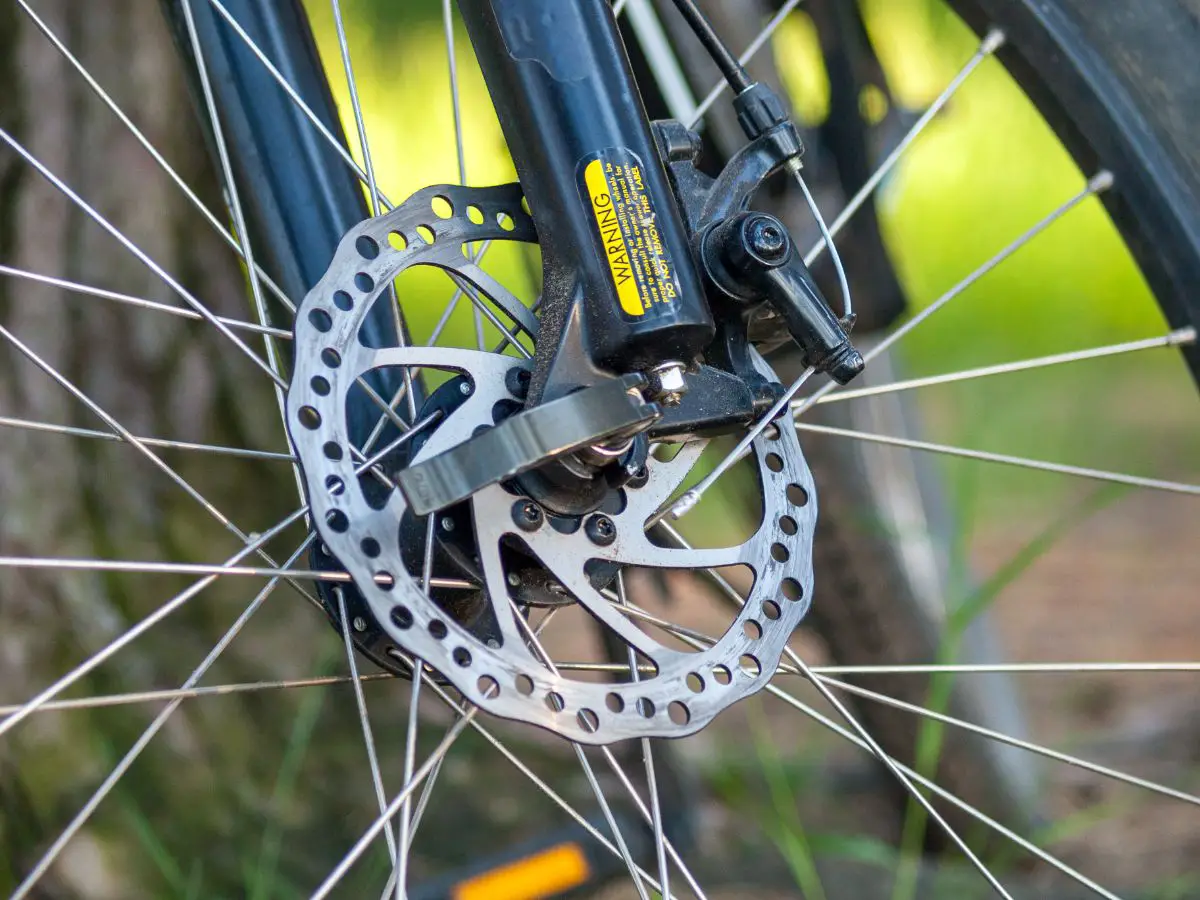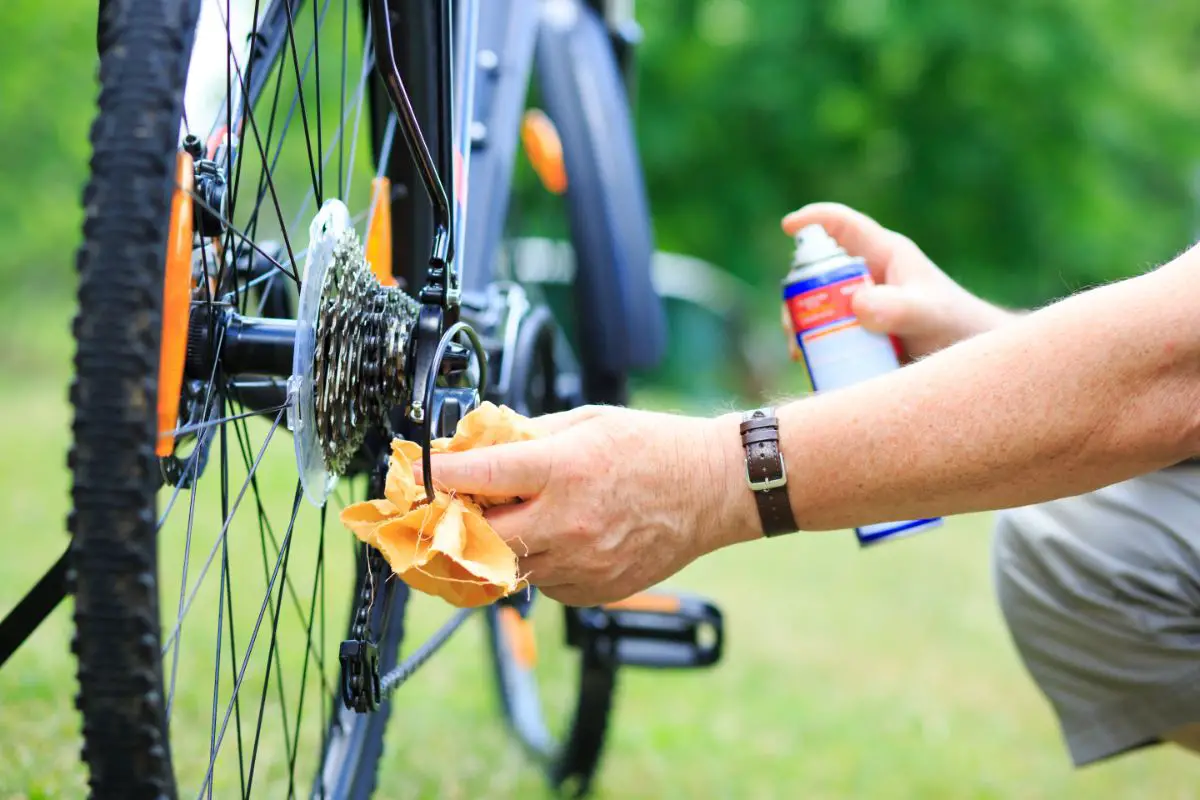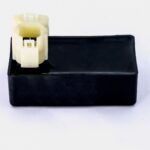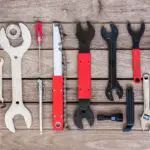
There was a time when disc brakes were only available on mountain bikes. Today, disc-brakes have become an essential feature offered by various cycle brands. Whether it is a disc brake or an ordinary one, brakes are integral parts of the bike.
According to single-tracks, 70% of bikes’bikes’ braking power is hidden in front wheels. Even riders who strictly recommended aesthetic brakes have now moved to disc ones. All the riders need to schedule mountain bike disc brakes maintenance.
Let us break down the proper method of keeping your disc brake intact, which will eventually make your ride safe and effective.
#1. What Are Disc-Brakes and Why Are They Better?
Before discussing disc-brake maintenance, you need to know what it is and why it is best for your bike. Engineers design bike brakes to increase the friction to stop the cycle smoothly.
The difference between a traditional bike brake and a disc brake is it applies pressure from the center of the wheel. In comparison, classic wheels apply pressure on the outer rim of the wheel.
Advantages of Using Disc-Brakes
One of the prominent advantages of disc brakes is it stops the bike at the very next instant when the rider applies the brake. Riders can drive at their desired speed and can decrease the rate just before stopping.
Disc-brakes become vital in races as drivers have to push themselves and not have much time to stop the speeding bike. One can also use the disc-brakes in any weather condition without worrying about slippery roads, slopes, or rough terrains.
What Are the Different Types of Disc Brakes
Generally, there are two different types of disc brakes: mechanical disc brakes and hydraulic disc brakes. Mechanical disc brakes use cable principles like rim brakes to stop the bike. At the same time, hydraulic disc brakes have special hydraulic fluid, which exerts pressure on pads to stop the rotation of the wheels.
You can shop for a mechanical disc brake if you love to do maintenance on your own. Mechanical disc brakes are also cheap when compared to hydraulic brakes. They can also readily match with the mechanical levers of your bike.
Hydraulic disc brakes are famous for their precision and safety, but they are highly priced for their quality. Although hydraulic disc brakes are popular, you will still have to spend on fluid leaks and repairs while using them. Most of the experts suggest that hydraulic brakes leak fluid after six months of run.
#2. Significance of Disc Brake Caliper Maintenance
You can relate calipers to pistons as they provide pressure to stop the bike. You can find them resting on the discs of both the front and the rear wheel of the bike. If you don’t perform disc-brake caliper maintenance, your rotor will not work correctly, impacting your braking system. You don’t need special tools for this job as re-clamping your caliper on the rotor is perfect for the job.

#3. How to Maintain Mountain Bike-Disc Brakes?
When the concern is about mountain bike maintenance, hydraulic bike disc brakes are the first thing that will be running in your mind. The two main parts of your brake assembly are pads and brake calipers.
Poor installation or aggressive riding can relocate their position, which can put you into trouble. Generally, all your mountain rides will exert a lot of pressure on your disc brakes. Moreover, every mountain rider must learn disc-brake maintenance to make their rides trouble-free.
How to Inspect Mountain-Bike Brake Assembly?
You don’t need any ultra-microscope to detect the infection here. You can visually inspect your front and rear calipers alongside rotors and pads. When you perform an inspection, you have to ensure that they are correctly attached to the rotors of the wheels.
You can check it by applying brakes. One of the best symptoms which your bike indicates is a cheeky sound while using brakes. If you hear this sound, then it is the right time to fix the brakes before getting into some deep trouble.
How to Immediately Fix Brake Assembly?
There is no specific time when your brake assembly can move off-guard. Therefore, you have to prepare for best and for worst. In most cases, re-adjustment is the best way to fix all the errors. You have to tighten all the bolts to prevent the sound.
#4. Necessary Tools Needed to Fix Disc-Brakes
Now that you know how to fix your disc brakes, then it is the right time to get all the necessary tools required for the job.

Disc-Brake Cleaner
There are various disc-brake cleaners available in the market. Shop for the one which is recommended by most of the professional riders in your region. Also, check for isopropyl alcohol or its substitutes while shopping for disc-brake cleaners.
A Clean Towel
You will need something to clean the grease. Therefore, your old soccer jersey is acceptable for the job. Also, don’t forget to shop disc-brake multi-tool to help you fix your disc brakes.
A Torch Light to Highlight the Error
Sometimes it might be difficult for you to find the patch or problem in the caliper. Shining a bright light behind the caliper will help you in finding the problem.
#5. How Can Lubrication Impact Overall Braking Efficiency?
At times your disc brakes might not work correctly, and you might need calipers and rotors at the right place. The problem might be hiding in the brake levers.
You can quickly fix this problem by applying a small amount of lubrication by squeezing your brakes. You can also clean your mechanical disc brakes by lubrication as it will provide a smooth braking performance.
Conclusion
Undoubtedly, rim brakes are alive, and even most professional riders love them. But it is better to switch to the latest trends by adapting with disc brakes. You can take small precautions to avoid pricey annual maintenance bills.
We hope you enjoyed the ride and share your opinion on what type of braking system you prefer. Also, share this article with your friends who are enthusiastic about cycling.





